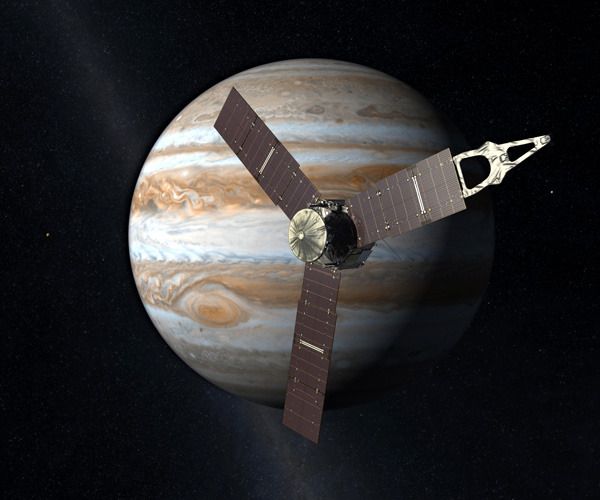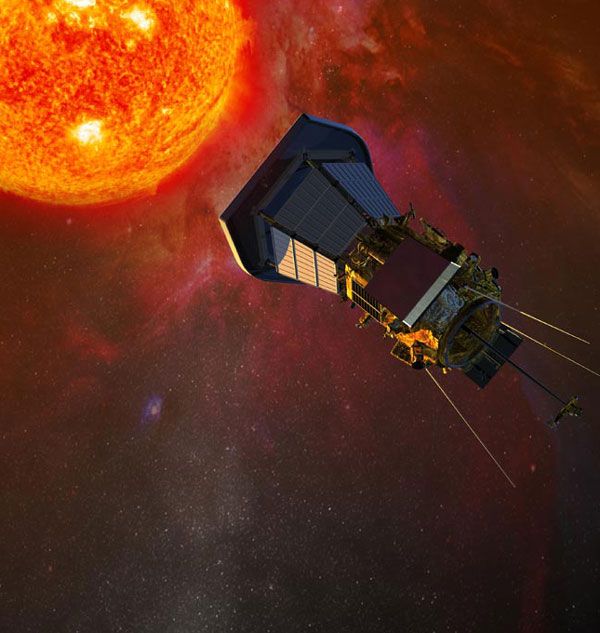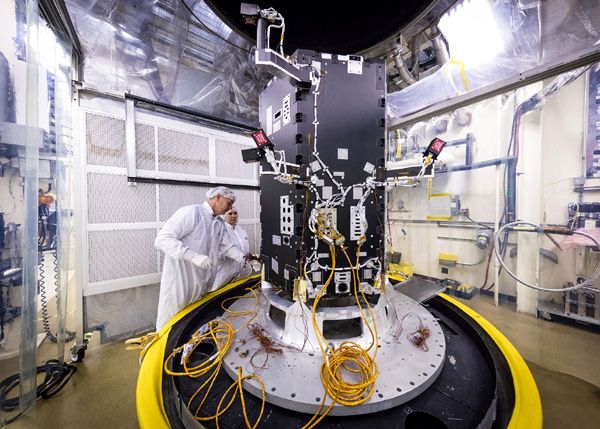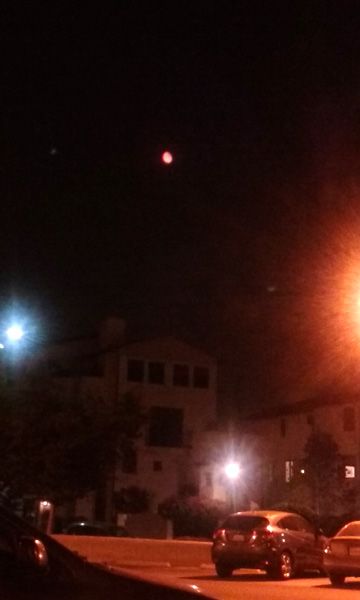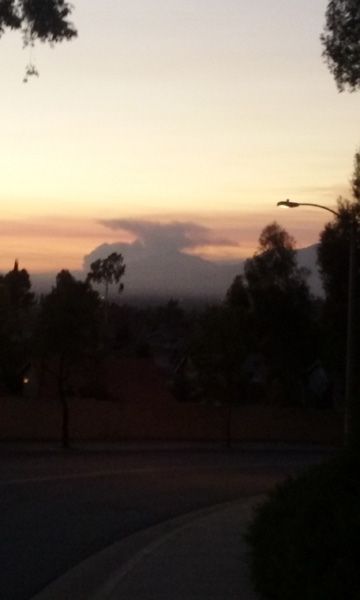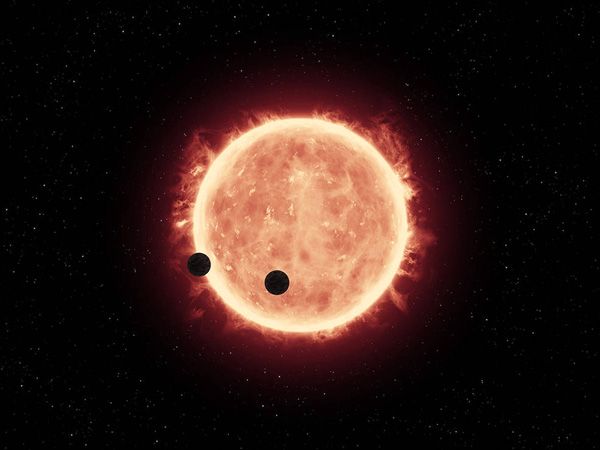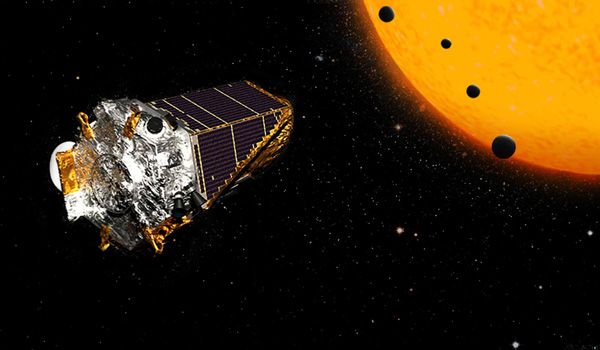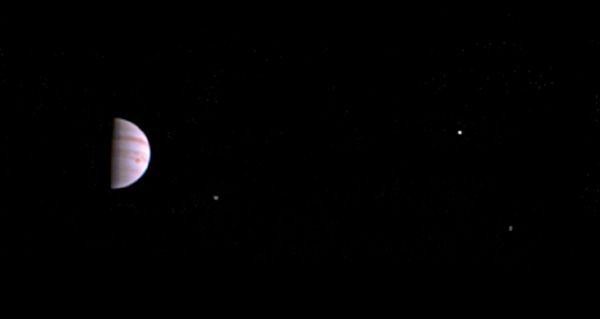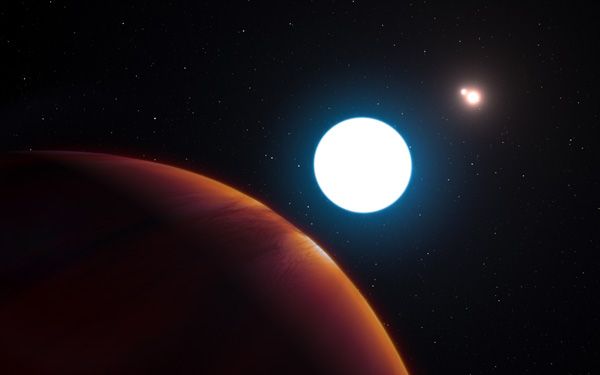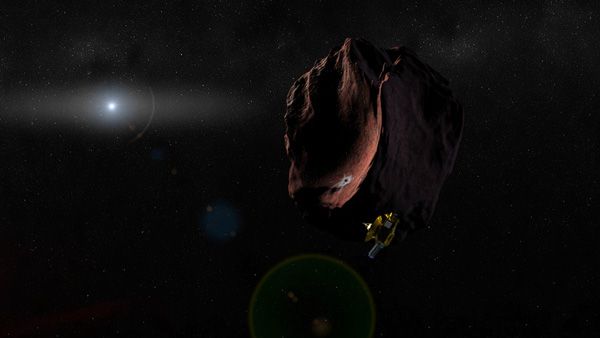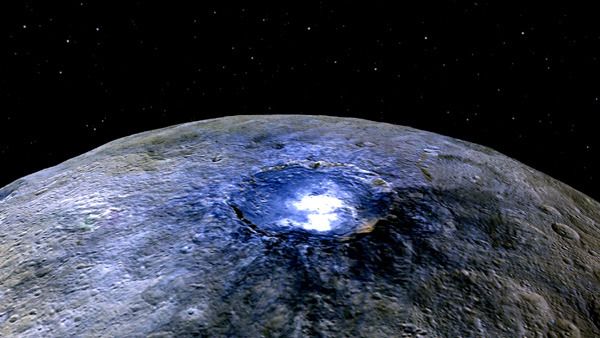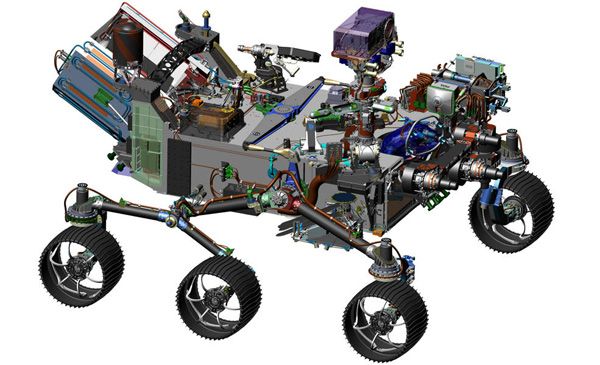 NASA / JPL - Caltech
NASA's Next Mars Rover Progresses Toward 2020 Launch (Press Release)
NASA / JPL - Caltech
NASA's Next Mars Rover Progresses Toward 2020 Launch (Press Release)
After an extensive review process and passing a major development milestone, NASA is ready to proceed with final design and construction of its next Mars rover, currently targeted to launch in the summer of 2020 and arrive on the Red Planet in February 2021.
The
Mars 2020 rover will investigate a region of Mars where the ancient environment may have been favorable for microbial life, probing the Martian rocks for evidence of past life. Throughout its investigation, it will collect samples of soil and rock and cache them on the surface for potential return to Earth by a future mission.
“The Mars 2020 rover is the first step in a potential multi-mission campaign to return carefully selected and sealed samples of Martian rocks and soil to Earth,” said Geoffrey Yoder, acting associate administrator of NASA’s Science Mission Directorate in Washington. “This mission marks a significant milestone in NASA’s Journey to Mars – to determine whether life has ever existed on Mars, and to advance our goal of sending humans to the Red Planet.”
To reduce risk and provide cost savings, the 2020 rover will look much like its six-wheeled, one-ton predecessor,
Curiosity, but with an array of new science instruments and enhancements to explore Mars as never before. For example, the rover will conduct the first investigation into the usability and availability of Martian resources, including oxygen, in preparation for human missions.
Mars 2020 will carry an entirely new subsystem to collect and prepare Martian rocks and soil samples that includes a coring drill on its arm and a rack of sample tubes. About 30 of these sample tubes will be deposited at select locations for return on a potential future sample-retrieval mission. In laboratories on Earth, specimens from Mars could be analyzed for evidence of past life on Mars and possible health hazards for future human missions.
Two science instruments mounted on the rover’s robotic arm will be used to search for signs of past life and determine where to collect samples by analyzing the chemical, mineral, physical and organic characteristics of Martian rocks. On the rover’s mast, two science instruments will provide high-resolution imaging and three types of spectroscopy for characterizing rocks and soil from a distance, also helping to determine which rock targets to explore up close.
A suite of sensors on the mast and deck will monitor weather conditions and the dust environment, and a ground-penetrating radar will assess sub-surface geologic structure.
The Mars 2020 rover will use the same sky crane landing system as Curiosity, but will have the ability to land in more challenging terrain with two enhancements, making more rugged sites eligible as safe landing candidates.
"By adding what’s known as range trigger, we can specify where we want the parachute to open, not just at what velocity we want it to open,” said Allen Chen, Mars 2020 entry, descent and landing lead at NASA's Jet Propulsion Laboratory (JPL) in Pasadena, California. "That shrinks our landing area by nearly half."
Terrain-relative navigation on the new rover will use onboard analysis of downward-looking images taken during descent, matching them to a map that indicates zones designated unsafe for landing.
"As it is descending, the spacecraft can tell whether it is headed for one of the unsafe zones and divert to safe ground nearby,” said Chen. "With this capability, we can now consider landing areas with unsafe zones that previously would have disqualified the whole area. Also, we can land closer to a specific science destination, for less driving after landing."
There will be a suite of cameras and a microphone that will capture the never-before-seen or heard imagery and sounds of the entry, descent and landing sequence. Information from the descent cameras and microphone will provide valuable data to assist in planning future Mars landings, and make for thrilling video.
"Nobody has ever seen what a parachute looks like as it is opening in the Martian atmosphere,” said JPL's David Gruel, assistant flight system manager for the Mars 2020 mission. “So this will provide valuable engineering information.”
Microphones have flown on previous missions to Mars, including NASA's
Phoenix Mars Lander in 2008, but never have actually been used on the surface of the Red Planet.
"This will be a great opportunity for the public to hear the sounds of Mars for the first time, and it could also provide useful engineering information," said Mars 2020 Deputy Project Manager Matt Wallace of JPL.
Once a mission receives preliminary approval, it must go through four rigorous technical and programmatic reviews – known as Key Decision Points
(KDP) — to proceed through the phases of development prior to launch. Phase A involves concept and requirements definition, Phase B is preliminary design and technology development, Phase C is final design and fabrication, and Phase D is system assembly, testing, and launch. Mars 2020 has just passed its KDP-C milestone.
"Since Mars 2020 is leveraging the design and some spare hardware from Curiosity, a significant amount of the mission's heritage components have already been built during Phases A and B,” said George Tahu, Mars 2020 program executive at NASA Headquarters in Washington. "With the KDP to enter Phase C completed, the project is proceeding with final design and construction of the new systems, as well as the rest of the heritage elements for the mission."
The Mars 2020 mission is part of NASA's Mars Exploration Program. Driven by scientific discovery, the program currently includes two active rovers and three NASA spacecraft orbiting Mars. NASA also plans to launch a stationary Mars lander in 2018,
InSight, to study the deep interior of Mars.
JPL manages the Mars 2020 project and the Mars Exploration Program for NASA's Science Mission Directorate in Washington.
Source: NASA.Gov



